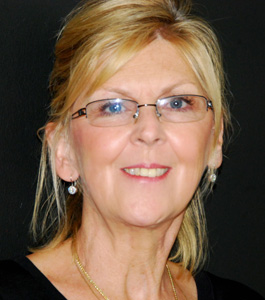Editorial
Front Page - Friday, September 24, 2010
Kay's Cooking Corner
Kay Bona

Designer coffees and coffee cafes seem to be the latest rage. If you’ve ever been to Portland or Seattle, you’d realize this quickly. There is a coffee shop on every corner. There is even a little known song about coffee written and performed by Tobymac, presumably written about one of the many conversations you might hear in a coffee shop. It goes something like this:
(Anyways I told the guy,
‘Nice coat! Who shot the cow?!’)
(laughter) (Hey how ya doin
today?) I’m doin okay. (Eh,
that’s dandy. Hey, what can
I get for ya?) I would like a triple
skinny, two-thirds decaf, half
chocolate, no whip- (Hey-uh,
hold up here, lemme break
out the pen here, we got kinda a tall order goin on)
I would like a triple skinny,
two-thirds decaf, half chocolate no whip Grande Mocha.
Oh yeah, extra foam. To go-o-o-o.
Kinda gets you in the mood doesn’t it? I think when I finish this article, I might hop on down to the nearest Starbucks! (While I listen to Tobymac)
The primary species coffee bean, Coffea arabica, originated in Ethiopia and migrated to the rich coffee belts of Brazil, Columbia and other countries in that region. The word coffee is probably derived from its earliest shipping point, Kaffa. The most desirable coffee is grown in altitudes about 3000 feet, which produces elegant, complex flavors in the coffee cherries containing the beans. The outer pulp and parchment of the coffee cherry are removed to reveal two beans, which are then cleaned, dried, and graded. The beans, ranging from pale green to dark yellow, are exported in their raw state to their final destination.
Roast Types
• American (regular) roast: medium-roasted, not too light or too heavy.
• French roast/dark French roast: heavily-roasted beans, a deep chocolate brown producing strong coffee.
• Italian roast: glossy, brown-black, strong-flavored, used for espresso.
• European roast: a medium to heavily roasted blend.
• Viennese roast: lighter than the European, not quite as light as the American.
• Instant coffee: powder made of freshly brewed, heat-dried coffee.
• Freeze-dried coffee: brewed coffee that has been frozen into slush before the water is evaporated; has a superior flavor over instants.
• Decaffeinated coffee: caffeine is removed from the beans before roasting by use of chemical solvents or by steaming the beans and scraping off the caffeine outer layers.
• Espresso: very dark, bitter Italian coffee often miscalled expresso. The term espresso comes from the Italian word meaning “pressed out,” which is the process of pushing freshly fine-ground beans through a machine using steam and water, creating a highly concentrated brew.
Coffee looses its’ flavor quickly (within two days), so proper storage is important. Coffee companies invented one-way valves on coffee bags?to keep coffee beans?fresher by stopping?oxygen from getting in, however, these do nothing to stop flavor from escaping. For the freshest coffee, buy whole beans; ground coffee looses flavor more rapidly. Store in airtight container in a cool, dry place for up to two weeks. The best storage containers are glass ones with rubber ring-sealing lids; these do not alter taste or characteristics of the coffee. For longer storage, freeze up to three months.
Cappuccino Mix
1 cup powdered instant
nondairy creamer
1 cup chocolate-flavored
drink mix
3/4 cup instant coffee
1/2 cup sugar
1/2 teaspoon ground
cinnamon
1/4 teaspoon ground
nutmeg
Combine all ingredients in blender and blend well. Store in airtight container. To Prepare: Combine 3 tablespoons per cup of hot water. Garnish with whipped cream.
French Vanilla Coffee Mix
1/3 cup instant coffee
1 cup instant dry-milk
powder
1/2 cup powdered coffee
creamer
1/3 cup sugar
1/4 cup instant vanilla
pudding mix
Measure all ingredients into clean, dry bowl of blender and blend well.? Store in airtight container.
To Prepare: Place 1/4 cup of dry French Vanilla Cafe mix into a coffee cup.?Add hot water to about 3/4 cup.?Stir and serve.
|
|